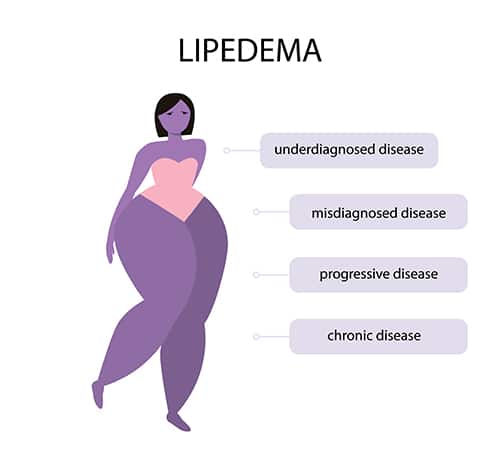Exploring the Medical Mystery of Lipedema

Marcia Byrd, M.D. in Atlanta, Georgia has been a pioneer in the treatment of lipedema and has performed over 5,000 successful and safe lipedema procedures. She hopes this post will help you understand lipedema, and its causes.
What is Lipedema and Why Is It Significant?
Lipedema is a significant medical condition that affects millions of women worldwide. It is characterized by the abnormal and disproportionate accumulation of fat cells in the lower body, leading to pain, swelling, and impaired mobility. Understanding the true nature of lipedema is crucial to finding effective treatment options and offering support to those affected by this condition.
Lipedema is often misdiagnosed or overlooked, as its symptoms can be mistaken for regular weight gain or obesity. However, it is essential to recognize that lipedema is not caused by lifestyle choices or lack of discipline. It is a distinct medical condition with underlying physiological causes.
How Genetics can Contribute to the Development of Lipedema
One of the significant factors that contribute to the development of lipedema is genetics. Research has shown a clear hereditary link, indicating that this condition can run in families. If a mother or grandmother has lipedema, there is a higher likelihood of other female family members developing the condition as well.
Genetic predisposition plays a crucial role in the abnormal accumulation of fat cells in the lower body. Specific genes related to fat cell metabolism and lymphatic function may be responsible for the disruption in the growth and distribution of fat cells in individuals with lipedema.
How Hormones Contribute to the Condition
Hormones also play a significant role in the development and progression of lipedema. Hormonal imbalances can have a direct impact on fat metabolism and distribution, leading to the abnormal accumulation of fat cells in the lower body.
One hormone that has been closely linked to lipedema is estrogen. Estrogen, a predominantly female hormone, is known for its role in regulating fat storage and distribution. Research suggests that higher estrogen levels may contribute to the development and progression of lipedema in women.
Another hormone that may play a role in lipedema is insulin. Insulin, responsible for regulating blood sugar levels, can also affect fat metabolism. Insulin resistance, a condition where the body’s cells become less responsive to insulin, may promote fat storage and contribute to the accumulation of fat in affected areas.
Lymphatic System Dysfunction
The lymphatic system plays a vital role in maintaining fluid balance, transporting immune cells, and removing waste products from the body. When the lymphatic system is compromised, it can lead to an accumulation of fluid, proteins, and fat cells in the affected areas.
In the case of lipedema, lymphatic dysfunction can exacerbate the abnormal accumulation of fat cells, causing increased swelling, discomfort, and pain in the lower body. This dysfunction may be due to a variety of factors, including impaired lymphatic vessel function, impaired lymphatic drainage, or a combination of both.
Understanding the impact of lymphatic system dysfunction on lipedema development is crucial for effectively managing the condition.
Seeking Treatment for Lipedema
For individuals living with lipedema, seeking appropriate treatment is crucial for managing symptoms and improving quality of life. While there is currently no cure for lipedema, there are various treatment options available that can help alleviate its impact.
One of the primary goals of treatment is to reduce pain and swelling associated with lipedema. Compression therapy, such as wearing compression garments or undergoing manual lymphatic drainage, can significantly improve symptoms by improving circulation and reducing fluid buildup.
Surgical intervention, offered by Dr. Marcia Byrd, can help remove excess fat and reshape the affected areas. Liposuction techniques specifically developed for lipedema, such as water-assisted liposuction and tumescent liposuction, have shown promising results in reducing fat deposition and improving mobility.
Dr. Byrd is a medical professional experienced in managing this condition. She can provide personalized recommendations based on individual needs and help navigate the available options.


